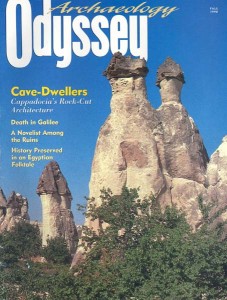Past Perfect: A Novelist Among the Ruins
As nations careened toward World War II, the American writer Henry Miller undertook a pilgrimage into Greece’s heroic past.

In 1940, with fascism, communism and democracy colliding violently around it, Greece was hardly an ideal tourist destination. But for Henry Miller, whose bold and sexually frank novels Tropic of Cancer (1934) and Tropic of Capricorn (1938) had fueled an uproar in the United States, it was the perfect time for a sojourn in another world. He spent much of his five-month stay with the English writer Lawrence Durrell, traveling back and forth between Athens and the Mediterranean island of Corfu, where Durrell lived with his wife. Despite the intense summer heat, Miller fell in love with Greece—and with its people; he soon began to loathe the company of foreigners. His friend Durrell aside, Miller especially detested the Englishmen he met in Greece, who he felt were unimaginative and effeminate compared to the lusty and heroic peasants of the Greek countryside. With the Greek poet George Katsimbalis as his guide, Miller visited the ruins of ancient Greece and later wrote about them in The Colossus of Maroussi (1941). Though Miller felt ashamed for being “merely” an American in such an old and storied land, he experienced a mystical rebirth there and was overcome by the “sense of eternality” that pervades the majestic Lion Gate at Mycenae and the sacred temples at Delphi. The muscular yet supple prose of The Colossus of Maroussi seems inspired by this feeling for the limitlessness of time and space.—Ed.
Already a library member? Log in here.
Institution user? Log in with your IP address.

